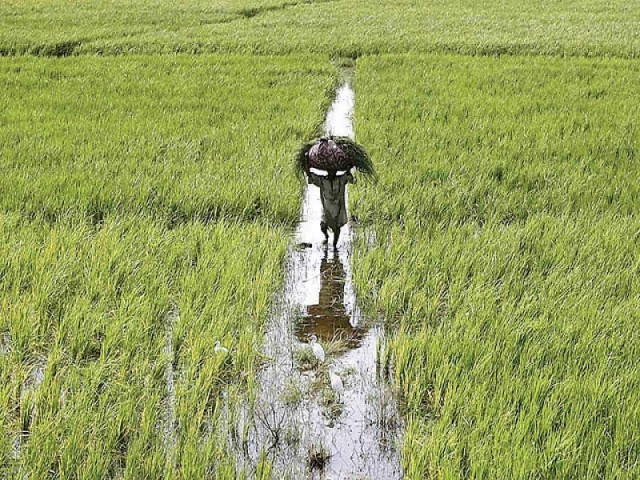Floods to hit economic outlook
Heavy monsoon rains have slashed potential output of important, minor crops

The Ministry of Finance on Thursday said the flash floods might impact Pakistan’s economic outlook – becoming the third major force to slow down the economy – as the government planned to make an appeal for aid to the United Nations to deal with the devastating floods.
The recent floods, caused by abnormally heavy monsoon rains, have adversely affected important and minor crops, which may impact the economic outlook through agricultural performance, said the Ministry of Finance in its monthly economic outlook.
The floods have reduced the potential output of both main and minor Kharif crops, thereby tampering with positive outlook of the agriculture sector, stated the ministry.
Initially ignored by the government, the floods have become the third serious challenge after “the global and domestic uncertainties that are still surrounding the economic outlook”.
The floods have negatively impacted economic activity in a number of cities, which may diminish economic prospects, stated the finance ministry.
The ministry released the report the day Prime Minister Shehbaz Sharif met with the international donors and sought their help to deal with the aftermath of the floods, telling them that initial assessments showed that the damage was more than that caused by the 2010 floods.
Besides damage to infrastructure and crops, around 1,000 people have so far died.
Sources said it was unlikely that the international lenders would commit major funds at this stage due to the prevailing global situation and their commitments to Ukraine.
Read Distraught flood affectees hoping for a miracle
The World Bank may repurpose its existing $370 million for the flood-related activities and the Asian Development Bank (ADB) is expected to reprioritise its $25 million funds, including an $8 million grant, earlier committed for Covid-19 purposes.
However, the bilateral donors indicated the provision of small grants, which might not be sufficient and the government would have to commit more funds from its resources.
The combined grant indications by China, the United States and the European Union may be a few million dollars, according to the sources.
The Ministry of Economic Affairs said on Thursday that on the appeal of PM Shehbaz, the international organisations and financial institutions announced an immediate aid of more than $500 million for the flood victims.
The statement suggested that the World Bank and the ADB had indicated that they would re-channel the existing funds instead of committing new loans.
Minister for Climate Change Sherry Rehman said that the National Disaster Management Authority was conducting a need assessment and the government was working to send out a flash appeal to the United Nations.
The UN may launch a $110 million flash appeal for Pakistan on Tuesday, said an official of the economic affairs ministry.
“The amount of water on the ground has inundated huge swathes of Pakistan, with 33 million affected, many stranded,” said the climate change minister.
Water is not flowing from the north as in 2010, but it is equally or more devastating in its sweep and destructive power. The number of homeless is growing, with Sindh asking for one million tents and Balochistan 100,000.
PM Shehbaz said that the floods had so far caused more damage than the 2010 floods.
In 2010, the World Bank and the ADB said that the floods that swept across Pakistan caused an estimated $9.7 billion worth of damage to infrastructure, farms, homes as well as other direct and indirect losses. The then government of Pakistan Peoples Party said that the floods had inflicted losses of $43 billion.
Read more Pakistan appeals for international assistance after floods
The finance ministry said the torrential rains and floods during July and August adversely affected the standing Kharif crops, specifically the cotton crop. Assessment of the crop damages is in progress by the provinces, however, significant losses can be witnessed, it said.
“The present situation depicts water-inundated cotton fields, mostly in Sindh, Balochistan and southern districts of Punjab,” said the ministry’s report.
The report said the economy was witnessing a slowdown in June and July.
The economy is going through high inflationary and external sector pressures due to higher commodity prices both in the international and domestic markets and exchange rate depreciation.
The finance ministry predicted that inflation would stay high in August at the level witnessed in the previous month. In July, the inflation surged to 25%. Year-on-year inflation will settle at nearly the same level as the one observed in July 2022, according to the ministry.
Published in The Express Tribune, August 26th, 2022.
Like Business on Facebook, follow @TribuneBiz on Twitter to stay informed and join in the conversation.



















COMMENTS
Comments are moderated and generally will be posted if they are on-topic and not abusive.
For more information, please see our Comments FAQ